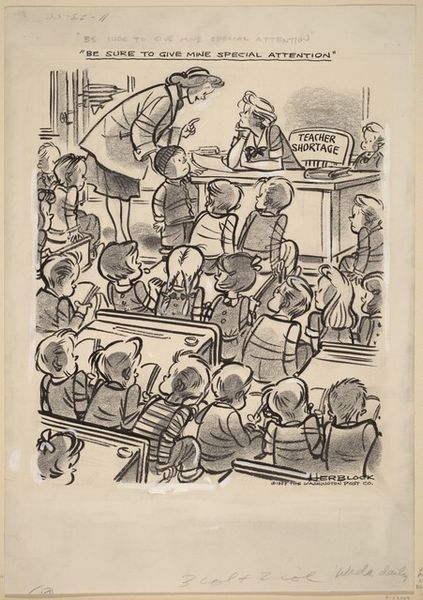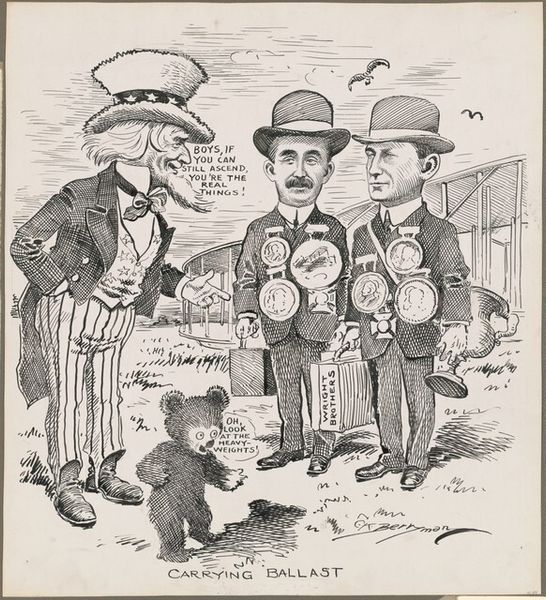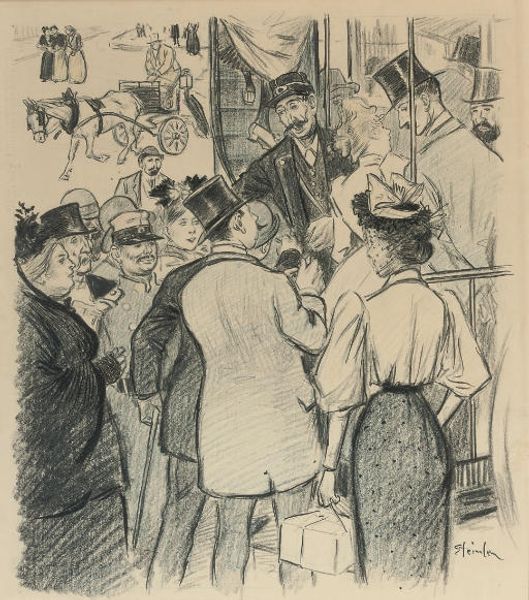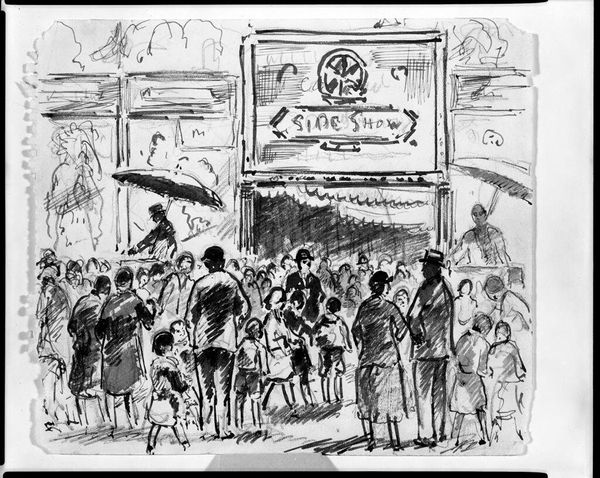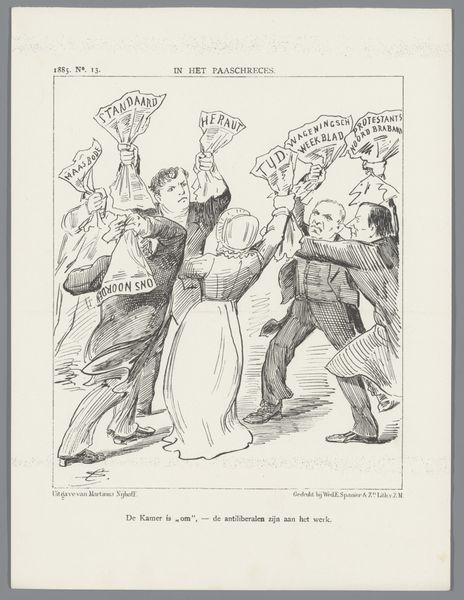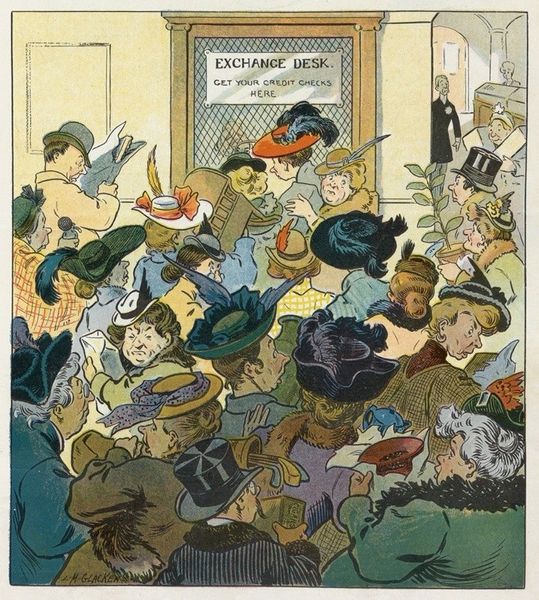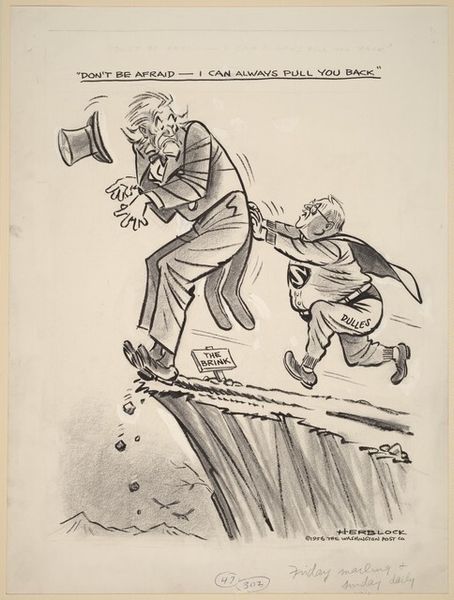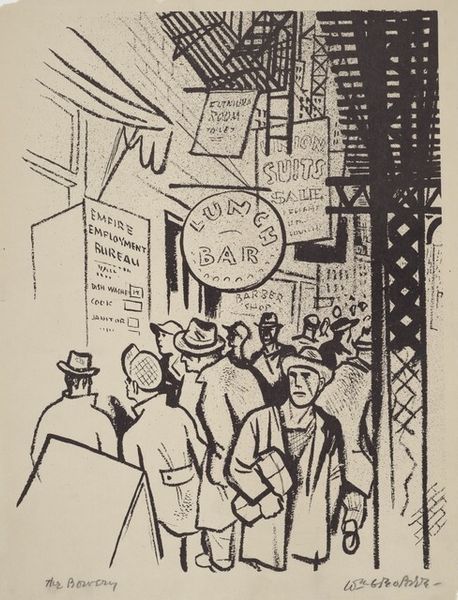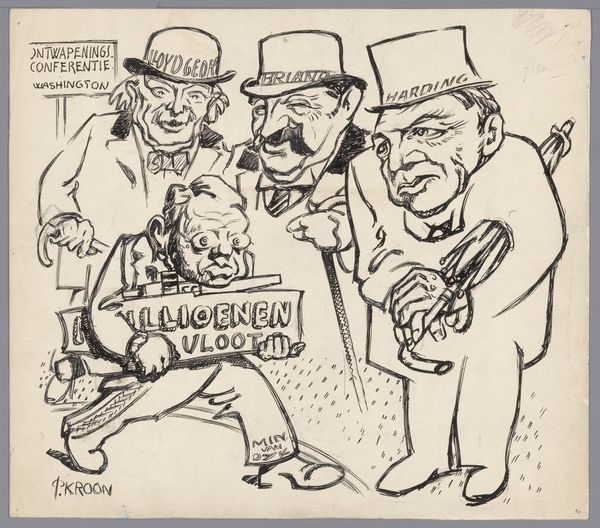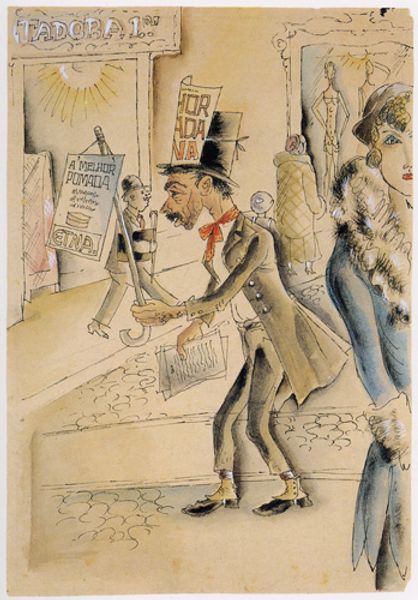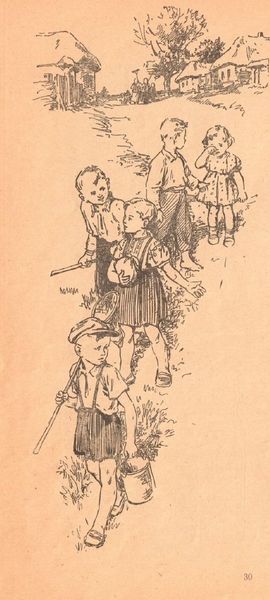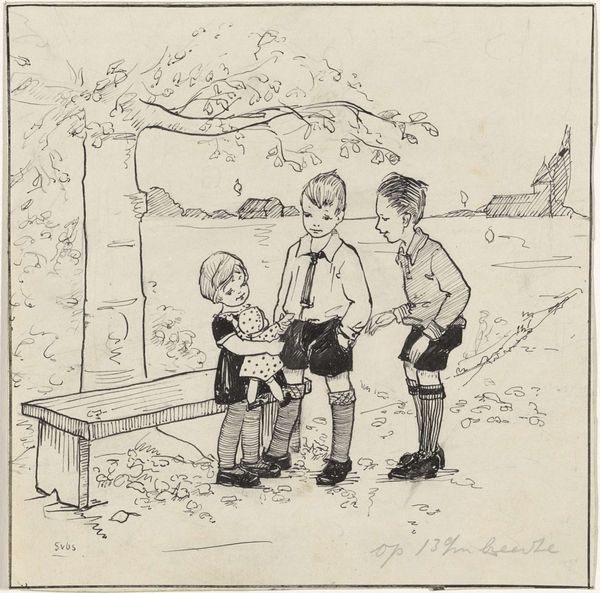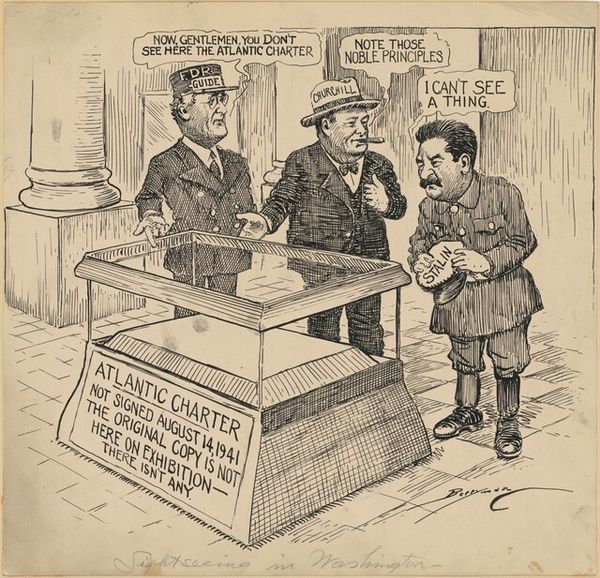
drawing, ink, pen
#
drawing
#
comic strip sketch
#
narrative-art
#
mechanical pen drawing
#
pen illustration
#
pen sketch
#
personal sketchbook
#
ink
#
ink drawing experimentation
#
pen-ink sketch
#
comic
#
pen work
#
sketchbook drawing
#
pen
#
storyboard and sketchbook work
Dimensions: sheet: 46.99 × 36.2 cm (18 1/2 × 14 1/4 in.)
Copyright: National Gallery of Art: CC0 1.0
Editor: This is "Another Form of Watchful Waiting," a pen and ink drawing by Clifford Kennedy Berryman, created between 1942 and 1945. It depicts a crowd of people, mostly children, gathered in front of a sign that reads: "Public Bathing Beach Will Not Open for 10 Days." The overall feeling I get is one of frustrated anticipation, that the promise of simple pleasure is being withheld. What strikes you when you look at this piece? Curator: Well, I immediately see the social commentary embedded in the image. We need to consider the context: this was drawn during World War II. Everyday pleasures, like a trip to the beach, were often subject to restrictions or postponements due to wartime measures, even scarcity. Berryman’s image highlights that tension between longing and enforced patience, wouldn’t you say? What does "watchful waiting" truly mean in a moment of global conflict? Editor: That's a really interesting point, putting it into that historical framework. The term "watchful waiting" itself sounds loaded, doesn’t it? It reminds me of political maneuvering, but here, it's applied to children wanting to go swimming. It's like the weight of the world is pressing down on these kids waiting to enjoy simple pleasures. Curator: Exactly! And it is not just about children. This piece comments on power dynamics, and the deferred gratification demanded by institutions. The closed beach is a symbol, reflecting a society conditioned to postpone enjoyment for the "greater good," a phrase that often masks unequal distribution of sacrifice. It’s important to analyze who is asked to wait and who benefits from this delay. Editor: So, Berryman's not just drawing a funny scene; he's hinting at broader issues of control and social obligation. It’s darker than it looks at first glance. Curator: Precisely. He encourages us to critically examine those structures that shape even our leisure time, and consider who benefits from them. We must analyze the seemingly innocuous to reveal these insidious power dynamics and consider ways for building equity. Editor: That adds a whole new layer of understanding. I’ll definitely think about the socio-political dimensions behind even the simplest scenes from now on. Thank you for the fresh perspectives on it.
Comments
No comments
Be the first to comment and join the conversation on the ultimate creative platform.
